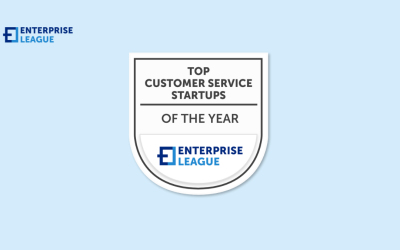Lots of businesses have a tough time with partnership marketing. As a result, they miss their chances to grow.
The reason? Not everyone knows how to use partnership strategies well. This leads to partnerships that don’t work, wasted resources, and missing out on big market opportunities.
But don’t worry, this article is here to guide you. We’ve put together a simple guide to partnership marketing. It’s all about building relationships that help both sides and getting the most out of your investment.
Let’s jump in and change the way you look at partnership marketing.
Different types of partnership marketing
Partnerships come in various types—like affiliates, co-branding, and joint ventures. There are many other types and each type brings its own unique benefits to the table.
Affiliates
This is like having someone vouch for your product. You partner with someone who promotes your stuff, and in return, they get a little something for every sale they help make.
Co-branding
In simple terms, co-branding is two businesses teaming up to create something awesome and share the spotlight.
Joint Ventures
Two heads are better than one, right? Joint ventures happen when two businesses pool their strengths to tackle a project together.
Benefits of partnership marketing
Here’s the scoop:
- Expanded Reach: It’s like doubling your address book. Partnering lets you tap into new audiences and get your name out there.
- Shared Resources: Why go it alone when you can share the load? Partnerships mean shared skills, knowledge, and sometimes even costs.
- Enhanced Credibility: It’s the trust factor. When you team up with a reputable partner, it rubs off on you. It’s like a stamp of approval for your business.
Now that we’ve covered the basics, you’re ready to explore the world of partnership marketing and see how it can supercharge your business.
Identifying and choosing the right partners
Choosing the right business partner is very important. You’ll be working towards goals, strategies, and dreams.
So if you’re going to partner up with someone, they better be the right fit. Let’s dive into the essentials.
Finding the right fit
- Guidance on Identifying Potential Partners: Start by looking for partners who share your business values and objectives. Find your business soulmate—someone who’s on the same page as you.
- Importance of Complementary Strengths: Picture this: you’re good at A, they’re great at B. Combine forces, and you’ve got the whole alphabet covered. Complementary strengths make a partnership stronger and more resilient.
- Importance of Complementary Audiences: Your audience meets their audience, and magic happens. A successful partnership often involves reaching new groups of people. It’s about expanding your fan base together.
Tips for vetting potential partners
- Do your homework. Research potential partners thoroughly to ensure they align with your goals.
- Meet in person or virtually. Face-to-face interactions provide insights you can’t get from emails or calls.
- Trust your instincts. If something feels off, it probably is. Listen to that gut feeling.
- Set the ground rules from the start. Clearly define expectations, roles, and responsibilities. It’s like drawing a roadmap for your partnership journey.
Choosing the right partner is a crucial step, and with these guidelines, you’ll be well on your way to building a partnership that propels your business forward.
Key elements of a successful partnership strategy
Goal Alignment
Ensure that both parties are on the same page regarding overarching objectives. When goals align, it creates a unified vision that guides the partnership towards shared success.
Role Definition
Clearly define the roles and responsibilities of each partner. Knowing who does what avoids confusion, streamlines processes, and maximizes efficiency.
Resource Allocation
Efficiently allocate resources, be it time, finances, or skills. A successful partnership strategy involves leveraging each partner’s strengths while minimizing any resource gaps.
Open Communication
Foster a culture of open and transparent communication. Regular and honest dialogue ensures that both partners are informed, aligned, and able to address challenges proactively.
Mutual Expectations
Set clear expectations from the outset. Understanding what each party expects from the partnership minimizes misunderstandings and paves the way for a smoother collaboration.
Flexibility
A successful partnership strategy allows for adaptability. Recognize that unforeseen challenges may arise, and flexibility enables partners to adjust and overcome obstacles together.
Continuous Evaluation
Regularly assess the partnership’s progress. Establish checkpoints to evaluate the effectiveness of strategies, identify areas for improvement, and celebrate milestones.
Executing and Managing Partnership Campaigns
Executing and managing partnership campaigns is where actions speak louder than words. Let’s delve into a step-by-step guide to ensure your collaborative efforts hit the mark.
Tips for maintaining healthy business partner relationships
- Communication is Key: Keep communication lines open. Regular check-ins ensure everyone is on the same page and can address concerns promptly.
- Celebrate Successes: Acknowledge and celebrate milestones together. It strengthens the partnership and builds a positive working relationship.
- Address Conflicts Proactively: Conflicts can arise. Tackle them promptly by finding mutually agreeable solutions.
- Regularly Evaluate and Adjust: Periodically assess the partnership’s effectiveness. Be willing to adjust strategies based on what is and isn’t working.
Executing successful partnership campaigns is a dynamic process.
By following these steps, leveraging digital tools, and maintaining strong communication, your collaborative efforts are set for success.
Measuring success and ROI in partnership marketing
Measuring the success of your partnership marketing efforts is crucial for steering your strategy in the right direction.
Choose clear and measurable goals
When setting Key Performance Indicators (KPIs), be specific about what you want to achieve. Whether it’s a percentage increase in sales, a boost in brand visibility, or enhanced audience engagement, clarity is the cornerstone of effective measurement.
Consider both short-term and long-term goals
Don’t limit yourself to immediate gains. Include milestones for both short-term wins and long-term success. This dual approach ensures a holistic view of your partnership’s impact, providing valuable insights over different timeframes.
Tips for data-driven decision-making
Analyze performance metrics
Dive into the data with analytics tools. Assess the performance of your partnership strategy by understanding which aspects are delivering positive results and which may need adjustment.
Optimize strategies based on data
Let the data be your guide. If certain elements of your partnership are proving more successful, focus on enhancing those. Conversely, if certain aspects are underperforming, use the data to pinpoint areas for improvement.
Importance of post-campaign analysis
The end of a campaign is not the finish line; it’s the starting point for analysis. Reflect on what worked well and what could have been executed better. Understanding the dynamics of your partnership is essential for refining future strategies.
Identify lessons learned
Go beyond the numbers and extract valuable insights. Understand the nuances of your partnership’s dynamics and how they contributed to the overall outcomes. Identify patterns and trends that can inform future decision-making.
Adjust future strategies
A commitment to improvement is at the heart of post-campaign analysis. Use the lessons learned to refine your approach for future partnerships. Each campaign serves as an opportunity to enhance strategy, ensuring that your future endeavors are more effective and impactful.
In essence, measuring success and Return on Investment (ROI) in partnership marketing involves a strategic blend of setting clear goals, leveraging data for informed decision-making, and a continual commitment to learning and improvement.
By embracing a proactive and analytical approach, you not only measure success but also pave the way for more impactful and successful partnerships in the future.
More must-read stories from Enterprise League:
- Learn about all the tips and apps you need to successfully manage a remote team.
- Get inspired from this list of creative small business ideas.
- Getting your product in stores doesn’t have to be complicated.
- Importance of online privacy laws in the digital era and how they protect us.
- Learn how to deal with being professionally ghosted like an expert.
Related Articles
40 inspirational business quotes to boost your confidence
Inspirational business quotes can boost your confidence, remind you why you started this journey, and assure you that you’re not alone in your struggles.
Top 21 customer service startups leading the way in 2025
By centralizing data and interactions, these 21 innovative customer service startups enable responsive, personalized cross-channel support experiences.
34 funny entrepreneur quotes to brighten your day
These 34 funny entrepreneur quotes will make you laugh long after you’ve read them. They’ll help you to put a smile on your face and brighten your day.
40 inspirational business quotes to boost your confidence
Inspirational business quotes can boost your confidence, remind you why you started this journey, and assure you that you’re not alone in your struggles.
Top 21 customer service startups leading the way in 2025
By centralizing data and interactions, these 21 innovative customer service startups enable responsive, personalized cross-channel support experiences.






